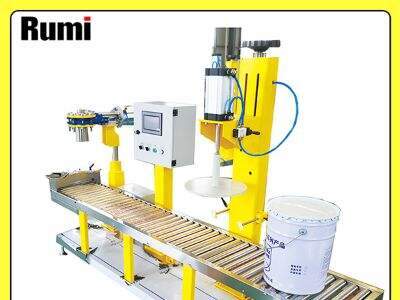It can be a challenging job mixing things. When we combine things like mixing ingredients to bake a cake or make slime — we expect everything to be mixed in just the right way. This brings me to one vital aspect of mixing, the speed at which we should mix. This is called mixing speed. We also want the viscosity, or thickness or stickiness, to be uniform. Today, we are going to share how to ensure that Rumi high viscosity mixer speed is just enough to mix up all of our things, but not enough to change the thickness or stickiness of it.
Speed of Mixing versus Consistency of Viscosity
Have you ever thrown something together and it came out funny? If we mix too quickly, that can also happen, because it can alter its viscosity. When we quickly mix something, we can over-move the ingredients. If we mix too slowly, we can end up with our mixtool undiluted. It’s like stirring a pot of soup super slowly — certain parts are hot and certain parts are still cold. We need to mix things fast enough to mix evenly but not so fast that it changes how they feel.
Guidelines for Altering Mixing Speed
When we mix, we have the ability to control the rate at which we mix. This High Viscosity Paint Filling Machine is similar to how we adjust the speed at which we ride our bikes, sometimes we need to ride faster, and other times we need to slow down. We can also mix our things at speeds or duration, to see what works best, so we can keep our thickness or stickiness, etc. If we realize that our things are changing too much when we mix them fast, maybe we can mix them slow. If when we mix slowly we observe that they are not mixed evenly, we can attempt mixing a little bit faster. With practice by switching speeds and observing the results we can discover how fast to mix.
Striking a Balance Between Efficiency and Quality
We want to mix things up the right way, you know? This means we want to be efficient, which is to say, do things fast and to not waste time. But we also want to ensure our things are done properly, which is referred to as quality. Our mixer for high viscosity liquids don't go well sometimes being too smart. So, we have to be fast, and we have to ensure our things are 100% mixed. This may include taking a couple more minutes to mix at a proper pace as to ensure we don’t give ourselves the wrong consistency on our items. So make sure you are balancing speed with all things perfection.
Key to Product Integrity and Productivity
When we combine we crave productivity, that is to get a lot done in a short time. However, we also want to ensure that our stuff is perfect, this is called product integrity. However, getting things done in a hurry can ruin our things. Which means we have to consider how to be efficient with our time while also ensuring everything is mixed perfectly. Learning to balance speed with perfection is the key to productivity.
Mixing Speed — How Fast is Too Fast?
The challenge is to mix all the component well so we have to find best speed for that mixing. One way is to begin slow and work in weaves faster. This helps us observe how our stuff changes when we are mixed. We can also experiment with mixing for various amounts of time and see how that changes how they turn out. Through experimentation and attention to the appearance and texture of our food, we can identify the optimal velocity capable of preserving everything that we are trying to achieve in terms of depth or adhesion. Note: Be patient, try different things.
Make sure to watch out for not over-mixing at the right speed. Knowing how to read mixing speed and viscosity uniformity, adjusting the mixing speed, optimizing quality and efficiency, maximizing speed and productivity, and finding tricks to achieve the perfect mixing speed are all keys to ensuring that our products are perfect every time. So the next time you mix things in together think about how fast do you mix and how that may impact the thickness or stickiness. Finding the right combination is the key.
 EN
EN
 AR
AR
 BG
BG
 HR
HR
 CS
CS
 DA
DA
 NL
NL
 FI
FI
 FR
FR
 DE
DE
 EL
EL
 IT
IT
 JA
JA
 KO
KO
 NO
NO
 PL
PL
 PT
PT
 RO
RO
 RU
RU
 ES
ES
 SV
SV
 TL
TL
 ID
ID
 LT
LT
 SR
SR
 SK
SK
 SL
SL
 VI
VI
 HU
HU
 TH
TH
 TR
TR
 FA
FA
 MS
MS
 BE
BE
 IS
IS
 AZ
AZ
 BN
BN
 EO
EO
 LA
LA
 MN
MN



